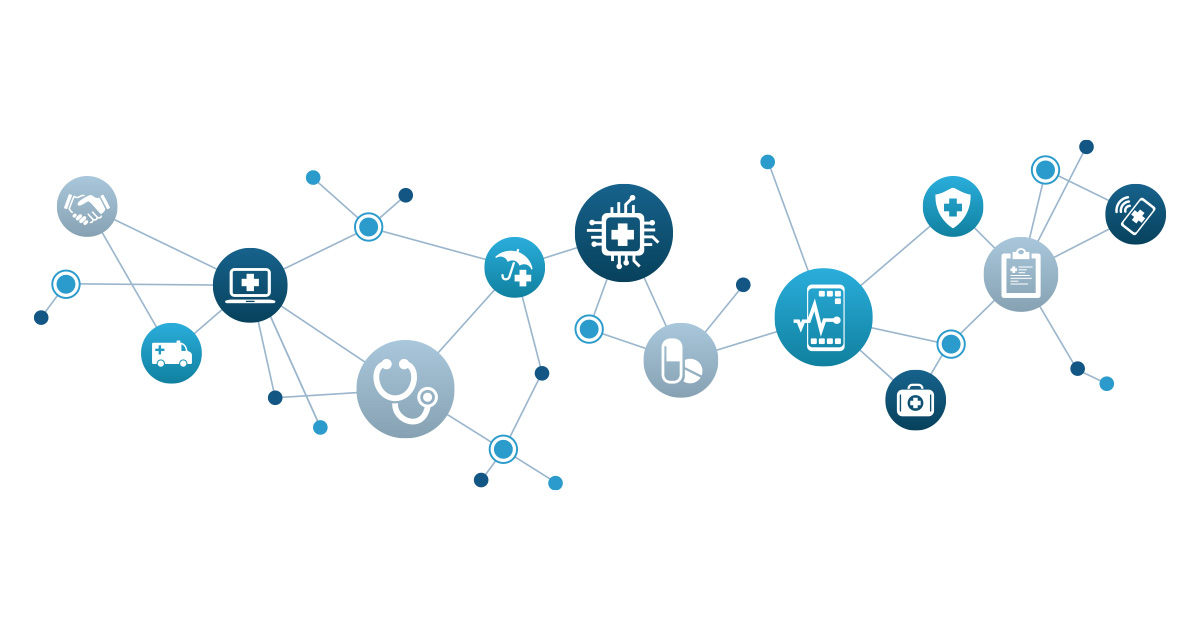The interoperability of technology platforms is an often-discussed but dodgy concept in the clinical research industry. While it is widely agreed upon that flexible software systems offer much more value than rigid systems, very few flexible technology tools for clinical research exist. In fact, there are a couple popular eClinical systems on the market that tout flexibility, yet only allow users to extend a small portion of their system via dynamic-link library (DLL). This antiquated and restrictive method does not provide clinical research professionals with the means to most securely access their data.
So, what can solve the lack of interoperability? Web APIs and Webhooks for external integrations are an optimal solution that can bring the industry up-to-speed from a digitization standpoint. This technology has been successfully implemented in the finance industry, retail industry, and beyond to increase efficiencies and improve outcomes; the same can be done in clinical research. APIs and Webhooks enable research teams with developer resources to not be limited by what the creators of the electronic data capture (EDC) system had in mind when they developed it. Moreover, they permit easier, yet more secure access to data – an item that most certainly tops the wish list when considering software to support clinical trial processes. In this post, we’ll delve into how APIs and Webhooks work, how they translate to clinical research, and how they’re being used today.
What is an API?
In its simplest terms, API is the acronym for Application Programming Interface, which is a software intermediary that allows two applications to communicate with one another. APIs allow for secure access to all data using any programming language and any number of tools. REST (representational state transfer technology) is an architectural style of API that uses HTTP requests to get, put, post, and delete data. Another way to think of RESTful APIs is as a library that is filled with calls, and these calls stand ready to gather and retrieve data. RESTful APIs are a good fit for cloud-based platforms because they are stateless, so any record of previous interactions and each interaction request has to be handled based entirely on information that comes with it. TrialKit, for example, follows REST standards, which aids developers when retrieving or writing data.
What is a Webhook, and how is it different from an API?
A Webhook is another means of sending data and information between two applications. Webhooks are also known as HTTP callbacks, based on some event that was triggered within the EDC; for example, the saving of a record or the firing of an edit check can optionally call a RESTful function. Because of this, notifications are generated in real-time. Webhooks can run either synchronously or asynchronously. The difference being when a call is made synchronously, the calling program waits for a response from the callee. When running asynchronously, control is returned immediately to the caller while at the same time, the callee services the request in a background thread. When dealing with the movement of large quantities of data, asynchronous calls are advantageous. When the caller cannot continue without a response from the callee, synchronous calls are better.
How does this technology apply to clinical research?
There is only one limitation to utilize Webhooks: both platforms you’d like to connect must support Webhook standards. Otherwise, there is no end to the integrations that can be set up to streamline workflow and improve outcomes. Connecting an EDC platform to other services via API or Webhook can address a number of pain points that plague research teams.
Many integrations can eliminate repetitive data entry. For instance, linking the EDC platform to the CTMS platform makes it so clinical research professionals do not have to input data separately in both systems; instead, the API will import the data automatically.
The API contributes to 21 CFR Part 11 compliance via edit checks in the EDC system. As an example, a monitor tags something as being monitored within the EDC system; subsequently, the API calls the CTMS system and notifies it of the monitoring activity.
This technology aids in real-time data collection as well. APIs and Webhooks equip systems with the ability to receive and analyze participant reported data immediately upon submittal, which means research professionals have the ability to react to adverse events and serious adverse events much quicker.
Additionally, incredibly complex reports can be generated using the API. Study, site, and subject data can be used to produce outcomes metrics. Metadata, like audit trails, query information, user behaviors on data entry can be accessed to generate more customized study progress and efficiency reports.
There are many more applications of APIs and Webhooks in clinical trial processes, and as technology continues to develop in this industry, so too do the ways in which it can increase efficiencies.
What are TrialKit’s API capabilities?
The greatest advantage of having an open API like TrialKit’s is that developers can use any environment they want to extend the capabilities of the platform in any way they see fit. This removes all limitations from the EDC – nothing is impossible and anything you can imagine can be done! TrialKit is the only system that gives you direct, secure access to your data.
The most robust in the industry, 683 unique calls constitute TrialKit’s API. In order to aid developers who would like to apply it to their processes, Crucial Data Solutions’ development team has created easily accessible, comprehensive documentation surrounding the API’s functions. The API supports two types of transactions: get and post. This, along with all routines and services, are thoroughly described in the documentation.
Clients are utilizing the API to integrate with central labs, scoring systems, clinical trial management systems (CTMS), and much more. Data generated by wearable devices, such as smartwatches, activity trackers, patches, etc. can populate TrialKit via API as well. This is what makes it possible to manage and track more accurate and objective sets of data, including heart rate, range of motion, etc. with minimal effort from study participants.
TrialKit leverages its API’s capabilities to communicate with an innovative software application that parses unstructured data from any EHR (Electronic Health Record) format or lab data from an existing eSource and populates it via web service in the clinical trial database as clean, structured data.
Software intermediaries like APIs and Webhooks serve as the missing link to interoperability and flexibility when it comes to clinical research technology tools. To learn more about the specifications surrounding TrialKit’s API and Webhook, contact us today.




